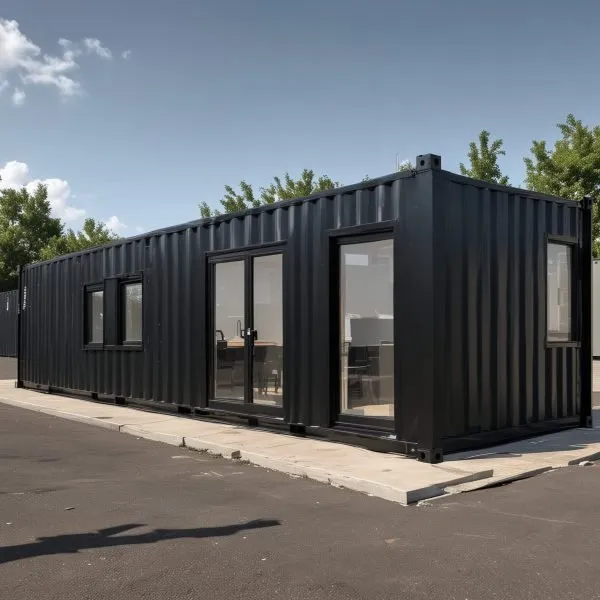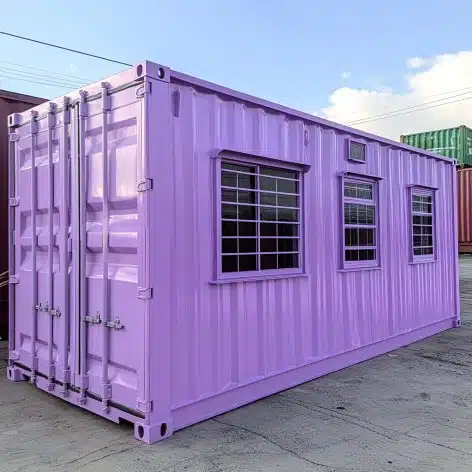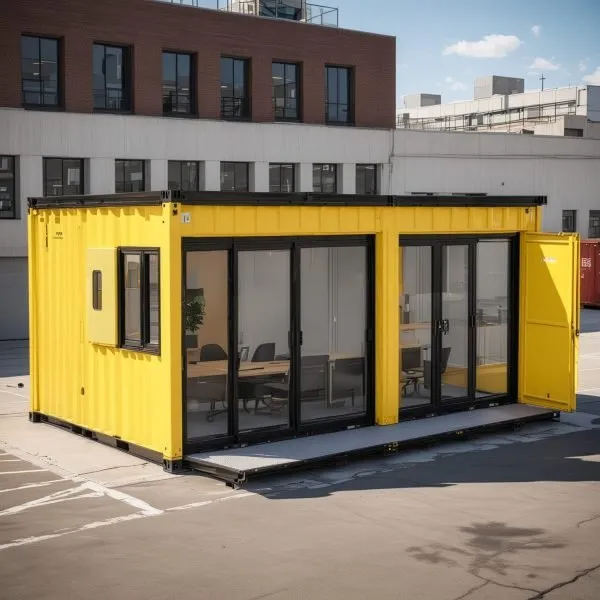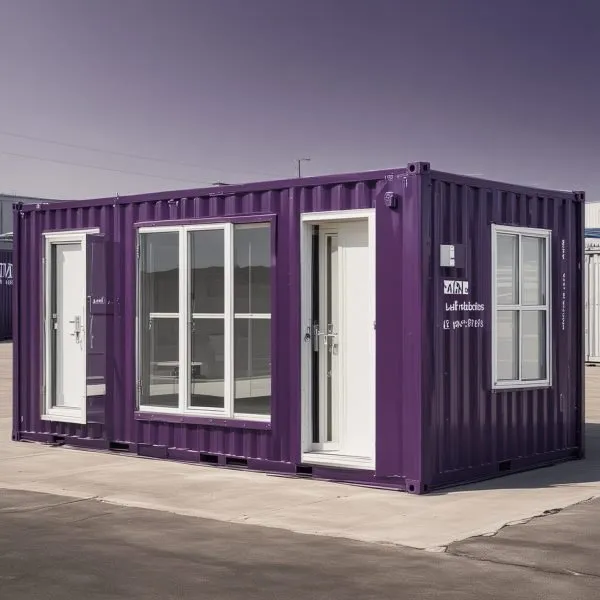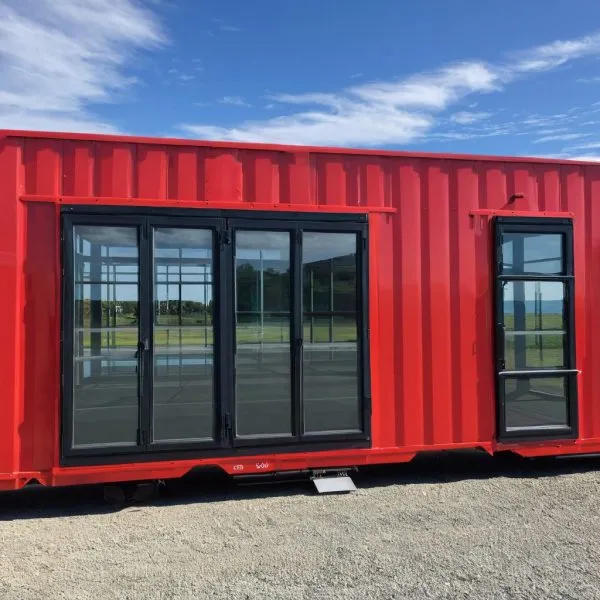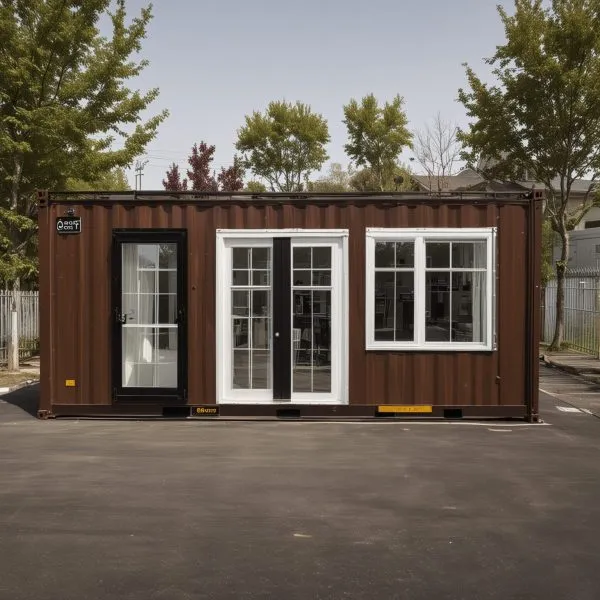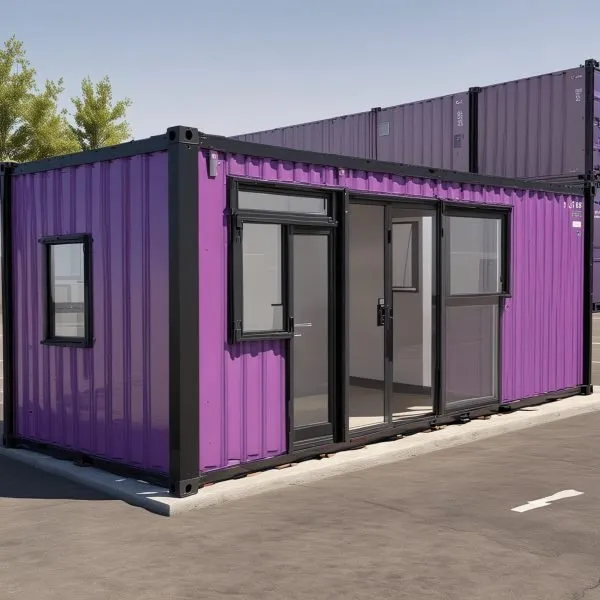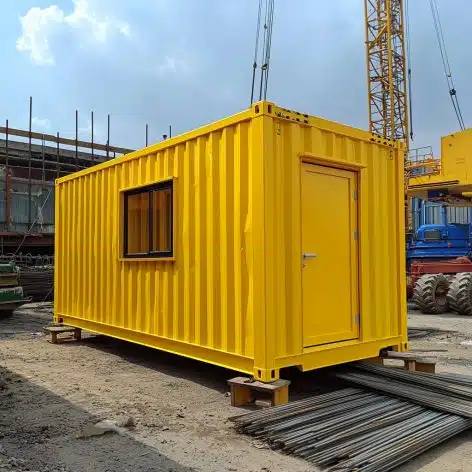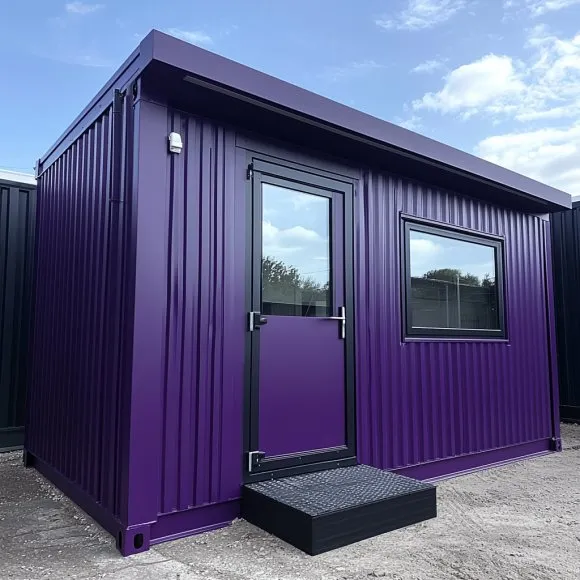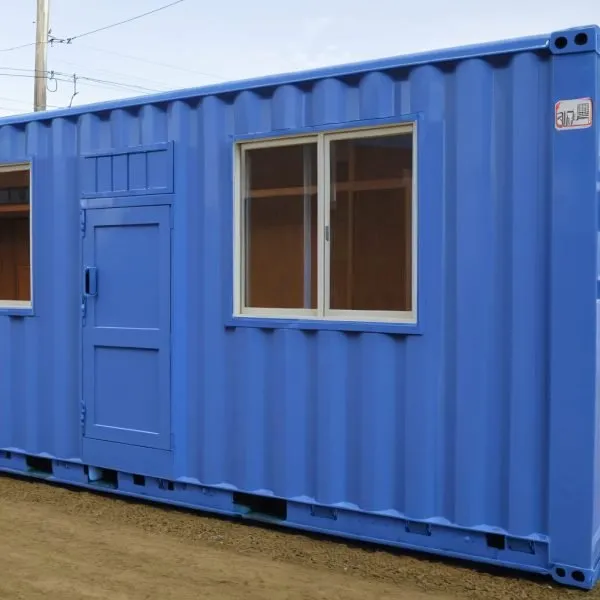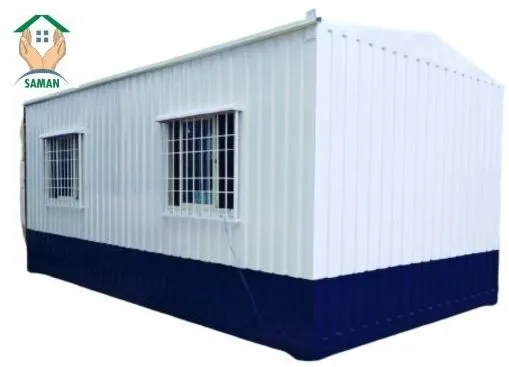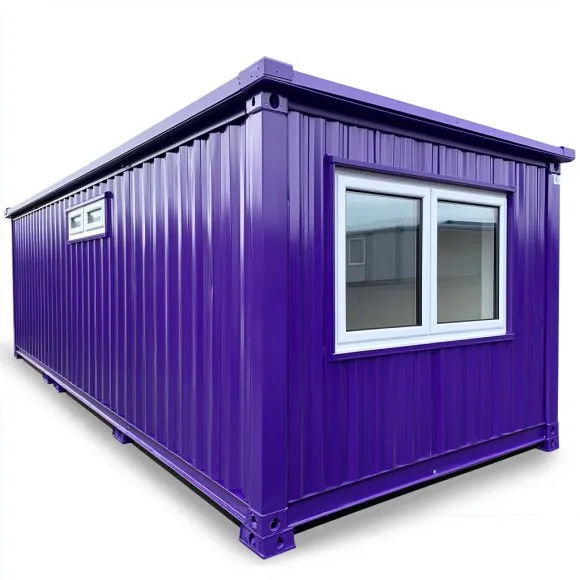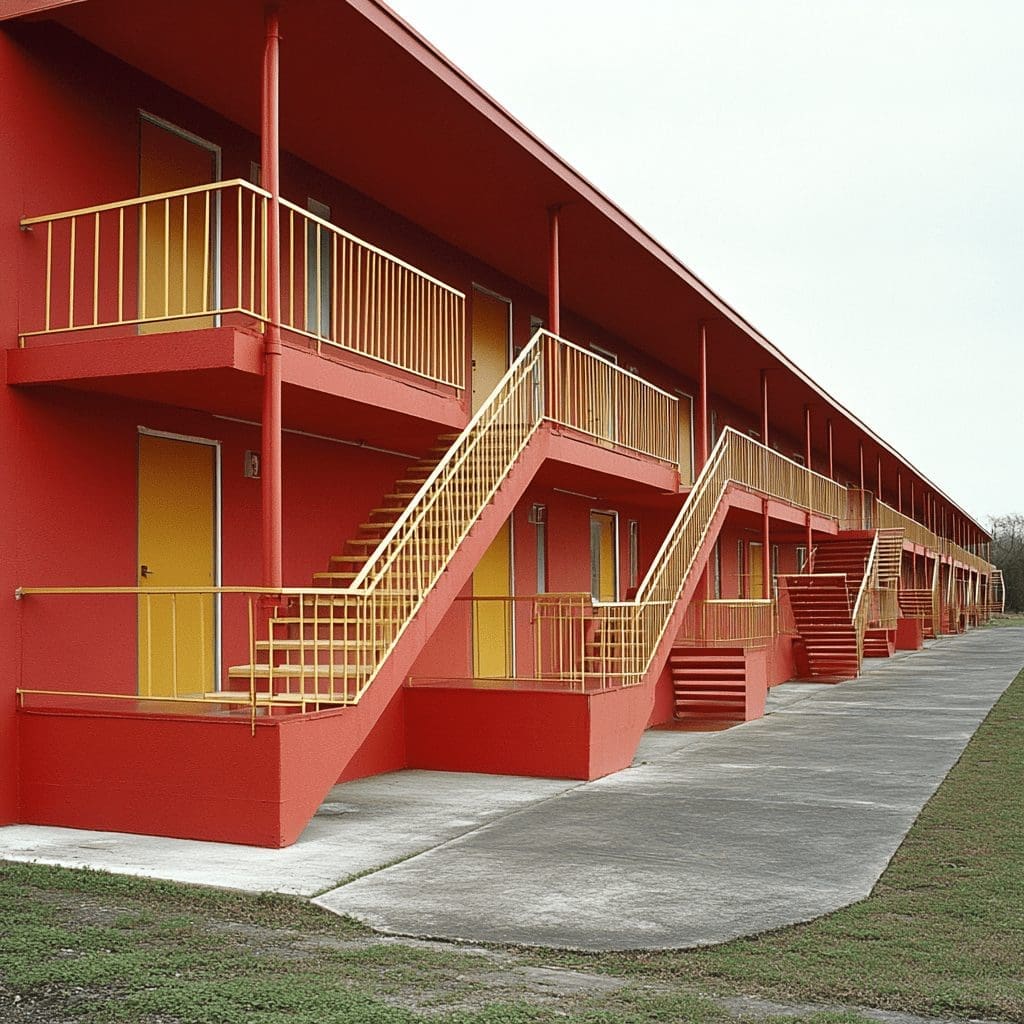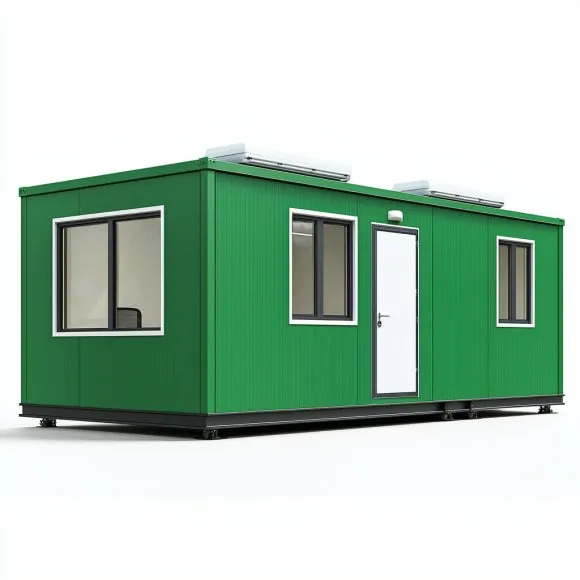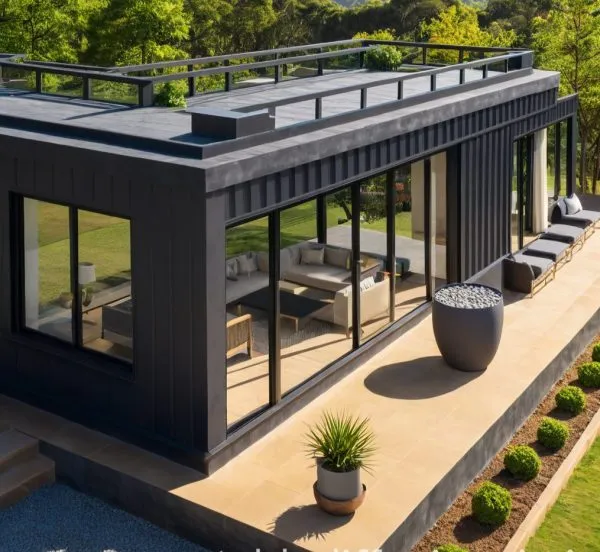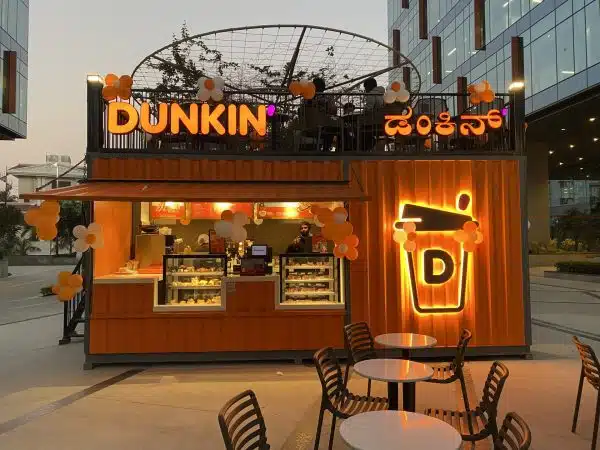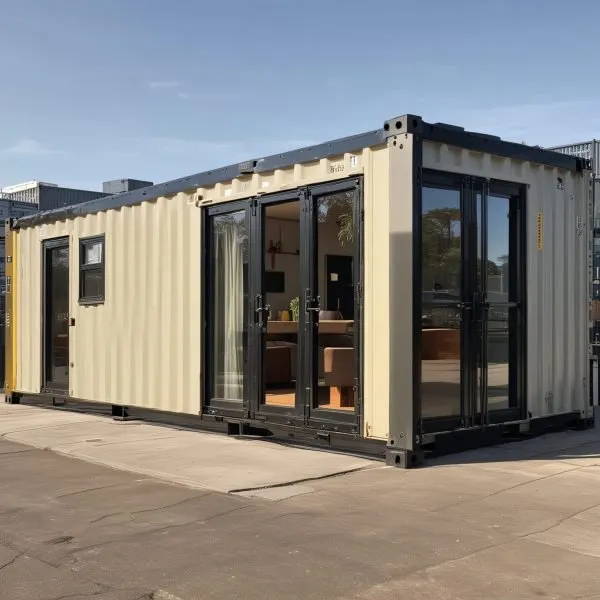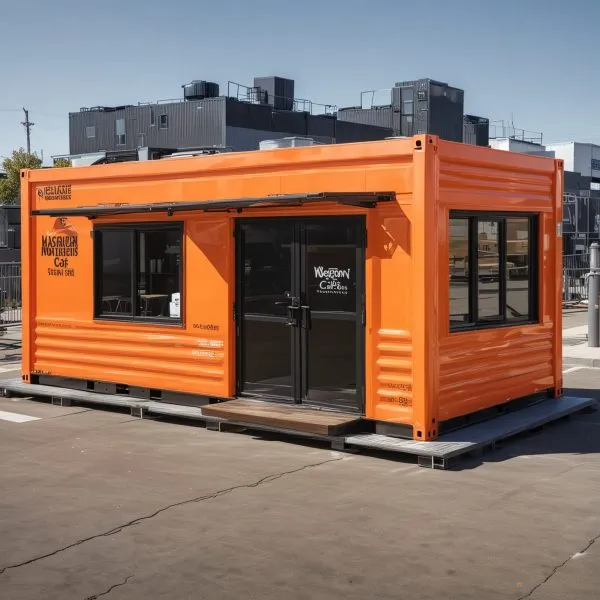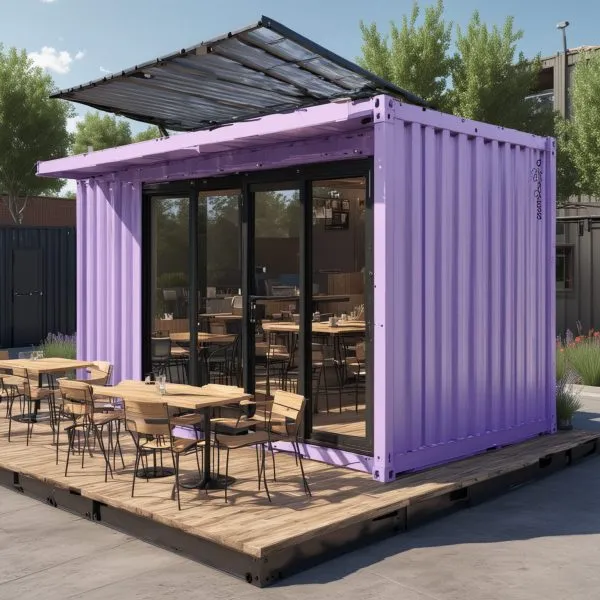Optimize Your Workspace with Functional Container Office Space Design Tips

In today’s fast-paced business world, being adaptable and efficient is crucial. Have you thought about turning your old office into a modern container office space? These innovative spaces offer many benefits that can change your workplace for the better. But how do you make a container office both functional and stylish? Let’s look at some design tips to help you make the most of your workspace.
Key Takeaways
- Modular design allows for easy expansion of office space as needed, enabling companies to scale up or down quickly.
- Incorporating a rooftop garden or terrace can maximize space utilization and provide a relaxing area for employees.
- Flexible wall solutions, such as sliding or foldable walls, offer the ability to create private areas or open spaces.
- Eco-friendly power solutions like solar panels or wind turbines can make container offices energy-efficient.
- Glass walls can improve natural light intake, enhancing productivity and employee well-being.
Understanding Container Office Space Fundamentals
Businesses are looking for flexible and affordable office solutions. Container offices have become a big change. Made from old shipping containers, they mix function, mobility, and green living. Learning about container office design opens up new ways to improve your workspace.
Benefits of Modular Office Solutions
Container offices are great because they’re modular. These small, complete units can grow, change, or move as your business does. This lets companies keep their office space up-to-date with their growth, fitting their exact needs.
Key Components of Container Offices
A container office starts with a strong shipping container. These containers are built tough for sea travel, giving a solid, weatherproof base. Inside, they add insulation, air systems, and smart window placement for a comfy, bright space.
Structural Considerations and Requirements
Designing a container office means thinking about its structure. Adding things like doors and windows needs careful planning to keep the container strong. Also, following local building rules is key to ensure safety and get the right permits.
| Container Size | Dimensions | Suitable for |
|---|---|---|
| 10ft Container | Length: 11.5ft (3.5m), Width: 8ft (2.44m), Height: 8.5ft (2.59m) | Small office, storage, or mobile workspace |
| 20ft Container | Length: 19.4ft (5.9m), Width: 7.8ft (2.35m), Height: 7.9ft (2.39m) | Larger office, workshop, or multi-functional space |
| 40ft Container | Length: 39.5ft (12.03m), Width: 7.87ft (2.4m), Height: 7.84ft (2.39m) | Spacious office, accommodation, or multiple-unit configurations |
Understanding container offices opens up new, flexible workspace options. From modular design to structural needs, this knowledge helps businesses create adaptable, thriving offices.
When transforming a shipping container into an office, focusing on functional and aesthetic elements is essential. One great way to achieve this balance is by exploring container office interior design ideas, which provide insights into optimizing small spaces without compromising comfort or utility. From insulation to efficient layouts, such designs elevate workspace productivity.
Planning Your Container Office Layout
When designing a container office, careful planning is key. You need to think about how people move around and where workstations and meeting areas go. Every detail matters to make the most of the space.
Don’t forget about insulation, ventilation, and electrical systems in the planning stage. Getting these right early on saves time and money later on.
- Prioritize layout planning as soon as the decision to adopt a container office is made.
- Assess different site options alongside layout planning to ensure compatibility between the available space and the design requirements.
- Emphasize modularity in the layout design to allow for easy expansion or relocation of the container office in the future.
- Adhere to local building codes and regulations to avoid legal issues and ensure compliance with safety standards.
By planning carefully, businesses can create workspaces that are efficient, flexible, and meet their changing needs.
“Proper planning for insulation and ventilation is crucial for comfort and functionality in container office layouts.”
It’s also important to plan for electrical and plumbing systems early on. Making changes later can be hard and expensive. Thinking about technology integration early helps avoid problems with wiring and internet.
The secret to a great container office layout is a detailed plan. It should balance function, flexibility, and follow the rules.
For businesses looking to combine style and efficiency, a well-thought-out layout is crucial. For inspiration, consider exploring examples like the 20ft container office design, which demonstrates how to maximize functionality in compact spaces. Proper layout planning ensures seamless movement and enhanced employee collaboration.
Container Office Space Design: Essential Elements
Creating a great container office space needs careful thought. It’s about making it both useful and nice to look at. You have to think about how to use the space well and make it comfortable for everyone.
Space Utilization Strategies
It’s important to use every inch of space in a container office. Using furniture that does more than one thing helps keep things tidy. Things like wall shelves and desks that change shape save space.
Interior Flow and Functionality
How you arrange the inside of a container office matters a lot. Putting desks, meeting spots, and places to relax in the right spots helps everyone work better together. This way, the office feels balanced and can change to meet different needs.
Ergonomic Considerations
Keeping employees comfortable and healthy is key in a container office. Choosing the right desks and chairs helps avoid back and neck pain. Adding desks that can change height and comfy chairs makes the office better for everyone.
“The key to successful container office design lies in striking a balance between functionality, aesthetics, and user comfort. By thoughtfully addressing these essential elements, businesses can create inspiring and efficient workspaces that empower their teams to thrive.”
Maximizing Natural Light and Ventilation
The modern shipping container office design is great for using natural light and improving air flow. This makes the work area comfortable and productive. Big windows, skylights, and glass walls let in lots of daylight. This cuts down on the need for artificial lights and makes the space feel more alive.
Good air flow is key in a container office space design. By placing openings right and using smart ventilation systems, you get fresh air. This keeps the temperature right and air quality high. It makes the space comfortable, healthy, and good for work.
To make natural light even better, add reflective surfaces. These surfaces bounce sunlight around, making the space brighter and more open. This approach not only looks good but also saves energy and is better for the planet.
“Integrating natural light into architecture results in improved visual beauty in a room and can lead to increased productivity in the workplace.”
Designing for natural light and air flow makes container offices great. They encourage creativity, teamwork, and well-being for everyone who works there.
| Benefits of Natural Light in Container Offices | Benefits of Efficient Ventilation in Container Offices |
|---|---|
|
|
By using these design strategies in modern shipping container offices, businesses can create spaces that are dynamic and good for everyone. These spaces encourage creativity, teamwork, and well-being.
Natural lighting and proper air circulation are key for a productive environment. Incorporating modern elements such as shipping container office interior designs ensures a balance between aesthetics and functionality. These designs enhance natural light flow and reduce energy costs, creating healthier workspaces.
Smart Storage Solutions for Container Offices
Optimizing your workspace in a container office interior design is key. Smart storage solutions help make the most of limited space. They keep your area tidy and organized. Let’s look at some ways to improve storage in your shipping container office interior.
Built-in Storage Systems
Custom-built storage is a smart choice. Wall-mounted shelves, cabinets, and drawers fit well into the container. They offer plenty of storage without losing the office’s look or function.
Vertical Space Optimization
Using vertical space is a big advantage in container offices. Smart storage like wall-mounted racks and ceiling shelves is great. They keep things organized and free up floor space for important office items.
Multi-functional Furniture Options
Choosing multi-functional furniture boosts storage in your office. Look for desks with drawers, filing cabinets, or even Murphy beds. These adaptable solutions make your workspace clean and efficient.
With these smart storage tips, you can turn your container office interior design into a top-notch workspace. It will be both efficient and stylish, making the most of every inch in your shipping container office interior.
Creating Comfortable Work Environments
When designing a container office or a modern shipping container office, comfort and productivity should be key. You can turn a small metal box into a welcoming and useful office. This office will help employees feel good and work better.
Keeping the office at a steady temperature is important. It makes sure everyone stays comfortable all year. Using materials that soak up sound helps reduce noise and echoes. This makes the office a quieter, more focused place.
Adding plants can make the air cleaner and the space feel calmer. This helps employees relax and feel better. Having areas for breaks or relaxation lets workers take a moment to refresh.
Using lights that can be adjusted helps everyone find their perfect setting. This makes the office a place where people can work comfortably and in their own way.
By focusing on these important details, you can make a container office or modern shipping container office that looks great and feels good. This leads to happier employees, better work, and a more positive work environment.
Modern Shipping Container Office Interior Design
Container office spaces are getting a makeover. They’re turning into lively, useful work areas. By using the latest design trends, companies can make their shipping container offices inspiring. This boosts work performance and makes employees happier.
Contemporary Design Elements
Shipping container offices are moving beyond their basic look. They now have a sleek, modern feel. This comes from big windows, simple designs, and smart use of materials like wood, glass, and metal.
Color Schemes and Materials
The colors and materials used are key to a container office’s feel. Choose colors that match your brand and make the space feel good. Adding natural materials like wood or stone brings warmth. Metal accents add an industrial vibe.
Lighting Solutions
Good lighting is vital for a container office. Use different types of light to make the space bright and welcoming. Skylights, big windows, and well-placed lights help bring in natural light.
By using modern design, smart colors, and clever lighting, businesses can turn their shipping container office interior into a modern, flexible space. It shows off their brand and creates a great place to work.
Creating dynamic work environments involves blending innovative design with practicality. Take inspiration from a modern shipping container office that showcases sleek designs and energy-efficient solutions. These spaces reflect modern trends, promoting both productivity and sustainability.
Technology Integration and Connectivity
As the modern workplace evolves, it’s crucial to integrate technology into your container office space design. This boosts productivity, efficiency, and employee satisfaction. By planning your technology infrastructure well, you can make a workspace that meets your business’s changing needs.
Ensuring strong Wi-Fi connectivity is key in modern shipping container offices. High-speed internet is vital for cloud apps, video calls, and remote work. Place access points wisely and use redundant networks to keep connections smooth, even in small spaces.
- Make sure there are plenty of power outlets and wireless charging spots for devices and laptops.
- Install top-notch cameras and speakers for clear video calls and meetings.
- Use cable management to keep things tidy and avoid messy wires that ruin your office’s look.
Consider adding smart office tech to save energy and manage your space better. Smart lighting, climate control, and security systems can cut costs and give insights into your office’s use.
| Feature | Benefit |
|---|---|
| Adaptive lighting systems | Mimic natural sunlight to boost employee well-being and productivity |
| Sensors and automated climate control | Adjust temperature and ventilation based on occupancy and weather conditions |
| Remote monitoring and management | Allow owners to track energy usage, security, and system performance from anywhere |
Integrating technology into your container office space design makes a dynamic, connected, and future-proof workspace. It empowers your team and meets your business’s changing needs.
Sustainable Features and Energy Efficiency
Businesses are now focusing on being green, and the container office is leading the way. Made from reused shipping containers, these offices are good for the planet. They have many features that help reduce harm to the environment.
Eco-friendly Materials
Steel is the main material used in these offices. It’s strong and can be recycled, helping the environment. Plus, they use special insulation like sheep’s wool or recycled cotton. This makes them energy-efficient and cuts down on carbon emissions.
Energy Conservation Methods
- Solar panels are added to these offices to use the sun’s energy. This cuts down on the need for fossil fuels.
- Good insulation and smart design, like natural air flow, mean less need for heating and cooling. This saves energy and money.
- Using energy-saving lights and appliances also helps these offices use less power.
Green Building Practices
Container offices save resources by using old materials. This reduces the need for new, raw materials. It also lowers the environmental harm caused by traditional building.
These offices are easy to move or change, showing they’re flexible and good for the planet. Many makers add even more green features, like green roofs and systems to catch rainwater. They also use paints that don’t release harmful fumes.
“Over 70% of businesses prioritize sustainability, leading to the emergence of container offices as eco-friendly workspaces.”
Container offices show a big commitment to being green. They’re a step towards a more sustainable future for businesses.
Expanding and Modifying Container Offices
Container office design focuses on flexibility and adaptability. Businesses with changing needs find these spaces ideal. They can grow and change easily.
Container offices are designed to grow. They have special points for adding or removing parts. This makes it easy to adjust your space as your business grows.
For those with limited space, stackable designs are a great option. You can stack 20ft container office design or 40 ft container office design units. This way, you can create tall office spaces without the usual construction challenges.
It’s important to plan for adding electrical, plumbing, and HVAC systems. This makes future changes smooth and keeps your business running smoothly.
- Modular connection points for easy expansion or contraction
- Stackable designs for vertical growth in limited spaces
- Flexible interior layouts that can be reconfigured with ease
- Integrated systems that accommodate future additions
- Ability to connect multiple containers for larger, open-plan offices
Container offices offer a future-proof solution for businesses. They allow you to quickly adapt to changes. This keeps you competitive in the market.
“Our container office expansion happened in a single afternoon, demonstrating the speed and efficiency of these modular solutions. Traditional construction would have taken weeks, causing significant disruption to our business.”
– Marketing Team, Falcon Structures
Businesses aiming for growth require scalable office solutions. A perfect example is the 40 ft container office design, which allows for stackable and modular configurations. Such flexibility ensures your workspace adapts to evolving needs.
Safety and Compliance Considerations
When designing a container office space, it’s key to follow local building codes and modular structure regulations. This ensures the safety of everyone inside and keeps the workspace strong.
Building Codes and Regulations
For shipping container office buildings over 15 meters tall, fire safety is a must. Architects need to work with experts to meet fire safety rules. This includes access, exits, staircase sizes, and fire escapes.
Spaces like assembly, educational, and industrial areas also need strict fire safety rules. Owners might need to get approval from the Chief Fire Officer before opening. They also must renew this approval every year for some types of buildings.
Emergency Exit Planning
- Make clear emergency exit plans with clear signs and easy paths.
- Use fire-resistant materials and systems to fight fires.
- Make sure there’s good air quality and ventilation for health.
Health and Safety Standards
Container office designs should think about making the workplace accessible for everyone. It’s also important to check the structure regularly and keep safety systems working well.
| Requirement | Details |
|---|---|
| Fire Clearance Renewal | Annual renewal for buildings like public entertainment spaces, hospitals, hotels, and underground shopping complexes. |
| Fire Service Fees | Fees for augmenting fire services for rescue operations in high-rise buildings, as prescribed by the Authority. |
| Architect Responsibilities | Responsible for fire protection measures and may consult experts in the field as needed. |
| Chief Fire Officer Authority | Can impose additional fire safety provisions depending on occupancy, height, or new developments creating fire hazards. |
By focusing on safety and following rules, container office space design can make workspaces safe, accessible, and flexible. These spaces meet the changing needs of today’s businesses.
Cost-Effective Design Solutions
Using container offices can save businesses money while keeping their space functional. Shipping containers are flexible, allowing for creative ways to cut costs without losing quality or style.
Modern shipping container offices also save on energy costs. Adding solar panels, better insulation, and smart climate control can lead to big savings over time.
- Modular design lets businesses grow or shrink without big renovation costs.
- Pre-made parts like partitions and storage systems make setup faster and cheaper.
- Even though starting costs are high, container offices are durable and efficient. They pay off in the long run, making them a wise choice for flexible workspaces.
By balancing initial costs with long-term savings, businesses can make the most of container offices. They get adaptable, useful, and affordable workspaces that grow with their needs.
“Vishay Porta Enterprises is recognized as the best Container Office Manufacturer and Supplier in India, offering high-quality, customizable, and eco-friendly solutions for modern businesses.”
Conclusion
The world of container office space design has changed a lot. It now offers new, flexible, and green ways to work. By planning layouts well, using natural light, and adding smart storage, offices can be both efficient and inspiring.
Container offices are a smart choice for businesses. They are cost-effective and can be made safe and sustainable. These spaces let companies show their brand, boost employee work, and keep up with market changes.
The container office space design industry is leading the way. It offers a flexible and affordable way to make workspaces that are both functional and nice to look at. By using old shipping containers, companies can make their work better, greener, and more adaptable to challenges.
At SAMAN Portable, we pride ourselves on crafting flexible and sustainable container office solutions tailored to meet diverse business needs. Learn more about our journey and commitment to quality on our About Us page. Discover how we can help transform your workspace into a modern, eco-friendly, and efficient environment.
FAQ
What are the key benefits of container office space design?
Container offices are practical, affordable, and flexible. They are easy to change as your business grows. They are also portable, green, and save money.
What are the essential components of a container office?
Important parts of a container office include insulation and ventilation. Also, windows for natural light are key. Structural support is needed for extra weight and changes.
How do I maximize space and functionality in a container office?
Plan carefully to use space well in container offices. Think about how people move and where workstations go. Don’t forget about insulation, ventilation, and electricity.
What design elements should I incorporate to create a comfortable and productive workspace?
Use insulation for steady temperatures and sound-absorbing materials to cut down noise. Add plants for better air. Breakout areas help employees relax. Adjustable lighting is good for different tasks.
How can I incorporate eco-friendly features in the container office design?
Choose eco-friendly materials and energy-saving lights and appliances. Think about solar panels or wind turbines for green energy. Natural ventilation helps avoid air conditioning.
What are the key safety and compliance considerations for container offices?
Make sure there are clear emergency exit plans and fire safety. Good ventilation and air quality are important for health. Include accessibility features for everyone. Check the structure and safety systems often.
How can I make container office space design cost-effective?
Look for ways to reuse shipping containers to save on materials. Use energy-efficient systems to cut costs over time. Modular design makes offices grow and change easily. Invest in quality upfront for long-term savings.
 Container Cafe
Container Cafe

